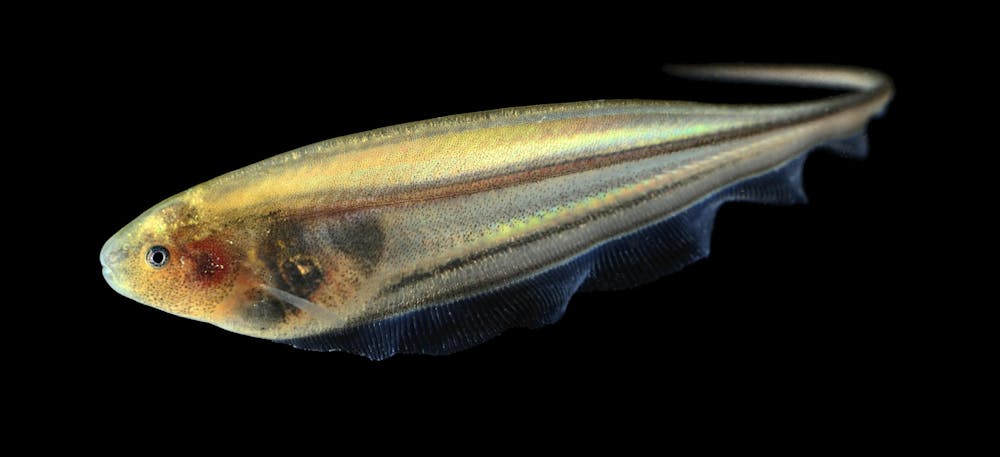In everyday life, we all make choices based on the information available to us. These decisions range from life-changing acts to the minutiae of existence. The question we answer, consciously or not, is whether or not we have enough data on which to act, or if we need to gain more information before doing so. This question is called the explore/exploit trade-off.
While studying this tradeoff in weakly electric glass knifefish (Eigenmannia virescens), a team of Hopkins researchers discovered a behavioral pattern present across the tree of life: When a biological system requires more information in order to complete a task, it switches into an active-sensing mode, accompanied with rapid movements, before returning to its original state. These results were published in Nature Machine Intelligence on Thursday, Oct. 26.
Professor of Mechanical Engineering, Founding Director of the Locomotion in Mechanical and Biological Systems (LIMBS) Lab and study co-author Noah Cowan discussed these results, which the team termed “mode-switching” in an interview with The News-Letter.
“Mode-switching is the name we gave to the biological phenomenon we observed, which is that when an organism is trying to maintain station, they occasionally do these rapid movements, and then they turn those back off,” Cowan said. “[For example], when you're standing in line, you're quite stationary for a while, and then you kind of wiggle around or change your footing for a second, and then you're quite stationary for a while.”
The particular task the team was studying was glass knifefish — who naturally want to stay hidden — maintaining their location inside of a moving tube. Knifefish can sense the world around them both visually and using a weak electric field. When the fish had access to both systems, they were able to maintain their position, but switched into an exploratory mode after a period of time. However, when the lights were turned off, their behavior completely changed with frequent bursts of movement as the fish attempted to gather information.
Cowan compared this action to finding a light switch in the dark: You have some information, but not enough to complete the task. Therefore, you slide your hand across the wall until you find the switch. Importantly, however, the velocity distributions created by the knifefish with and without light follow the same “broad-shouldered” pattern with “wider shoulders” (indicating more frequent high-velocity actions) when the fish rely more on active sensing.
“We discovered the behavior in the fish, and then we tried to rationalize that behavior with a model. The model made a couple of simplifying assumptions about the way the organism senses the world and the way the organism moves, which reproduced what we saw in the animal. But we realized that many organisms share very similar features because they use sensors that... [experience] what's called adapting, meaning that when you give the sensor the same stimulus for a long time, it becomes less and less able to detect that stimulus,” Cowan said.
An example of this is that when you are sitting near a loud fan, you gradually tune out the noise, resulting in a deafening silence when it is turned off. As Cowan mentioned, the team turned to data gathered from other organisms — ranging from humans and mice to moths and amoebas. Mode-switching and its accompanying “broad shoulders” were present in all of them.
“We developed a theory, and then we tested that theory by making predictions about what we would see in a wide variety of other organisms. We found it over and over again. In fact, we have not yet found a counterexample,” Cowan said. “The paper published 10 examples. Those are the 10 examples that we found the data for. We didn’t find 30 examples and cherry-pick the ones that worked, we picked them all.”
The first author of the recent paper, LIMBS Postdoctoral Fellow Debojyoti Biswas explained that, due to the wide range of organisms sampled, there is no one mechanism ordering mode-switching behaviors across the biological world — amoebas sense the world around them in dramatically different ways than humans — but that the end result is the same.
“[The organisms] evolved in different ways, but still, they're showing certain similarities, and that gives us an idea that this is something called evolutionary convergence,” Biswas said in an interview with The News-Letter. “We are not claiming that they are manifested through the same mechanism, but at the final result, they are similar.”
Moving forward, the lab hopes to discover the mechanisms that represent uncertainty inside a given organism, particularly glass knifefish. In addition, the team has developed a mathematical algorithm for instantiating mode-switching, which they hope will bear engineering and robotics applications. In particular, the team hopes to use exploratory modes to build more energy-efficient methods of gathering data.
“What our solution does is achieve the same performance with substantially less effort. Engineers put a tremendous amount of money and effort and development into making sensors that are very good at determining absolute values. Maybe we can spend less money and effort on that. If we add these behaviors that do active sensing to the system, we might be able to change our engineering design approaches to the sensors to make them more like biological sensors,” Cowan said.
Biswas added that just as engineering can be shaped by the natural world, so too can our understanding of the natural world be shaped by engineering principles. This two-way process is central to LIMBS’ future goals.
“We hope to use our robotics, control system, mathematics and physics knowledge to understand the biology, how this thing is actually happening in nature,” he said. “Organisms are doing a much better job than the existing robotics. What we’re doing is giving them this flexibility by using an engineering approach to understand [biological systems] better.”
Editor’s Note, 2023: This article has been updated to correct a bracketed addition to a quote. The News-Letter regrets this error.





